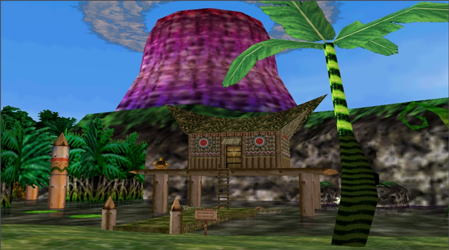Realistic Visuals and the Zelda Franchise
Posted on March 02 2012 by Hanyou
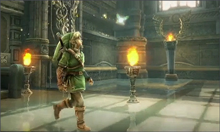 Gamers have long been fascinated with the prospect of truly believable games. Developers and publishers have pitched “realistic” graphics for decades, and open-world gameplay, which is at least superficially an emulation of life in the real world, has ensured that “hardcore” gamers’ collective desire for realism has reached a fever pitch. Since the sixth generation, console gamers have seen their industry push past rudimentary, limited-polygon 3D character models and prerendered backdrops in favor of new levels of detail. The current generation, which will soon be coming to a close, has offered us more detailed textures, smoother animations, and larger worlds than would have been possible on older hardware. The gap between PC and console hardware seems to have narrowed as developers have focused resources on the successful console market. This is exactly the sort of progress we anticipated — we’re on track, and things can only get more realistic from here, hardware permitting.
Gamers have long been fascinated with the prospect of truly believable games. Developers and publishers have pitched “realistic” graphics for decades, and open-world gameplay, which is at least superficially an emulation of life in the real world, has ensured that “hardcore” gamers’ collective desire for realism has reached a fever pitch. Since the sixth generation, console gamers have seen their industry push past rudimentary, limited-polygon 3D character models and prerendered backdrops in favor of new levels of detail. The current generation, which will soon be coming to a close, has offered us more detailed textures, smoother animations, and larger worlds than would have been possible on older hardware. The gap between PC and console hardware seems to have narrowed as developers have focused resources on the successful console market. This is exactly the sort of progress we anticipated — we’re on track, and things can only get more realistic from here, hardware permitting.
Then there’s Nintendo.
The Wii was certainly not a powerhouse in any sense of the word. That’s old news, and while the console is successful, you’ll never see 360-level, much less PC-level, draw distances and texture detail on the thing. Nintendo’s stuck with timeless, cartoonish styles, possibly because as long as you’re not trying to emulate reality, people are less likely to judge your graphics in a negative light a few years hence. Some gamers are understandably frustrated. Nintendo has shamelessly bucked the trend of progress. The Wii was unpredictable, and its lack of power was not a welcome dose of unpredictability for some longtime fans.
Naturally, the Zelda franchise has followed suit. Apart from Twilight Princess, each and every Zelda game has retreated to an unrealistic, artistic approach that hearkens back to The Wind Waker. It felt brand new in 2003, but even Skyward Sword — which featured a new style of its own — seems to be defiantly railing against the trend of realism.
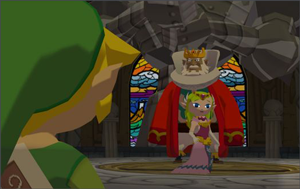 For a short amount of time, the WiiU is likely to be the most powerful console on the market. The developers are limited only by the boundaries of their own imaginations. In 2003, that yielded The Wind Waker, whose graphical style was imaginative and perfectly-executed, even in spite of an initially chilly reception. The development team could afford to defy expectations, to buck its own trends, to take us to formerly unseen worlds. With the recent announcement that the next Zelda game will certainly be in High Definition, they can afford to do it again; there’s no better time to ask what direction would be best for the franchise.
For a short amount of time, the WiiU is likely to be the most powerful console on the market. The developers are limited only by the boundaries of their own imaginations. In 2003, that yielded The Wind Waker, whose graphical style was imaginative and perfectly-executed, even in spite of an initially chilly reception. The development team could afford to defy expectations, to buck its own trends, to take us to formerly unseen worlds. With the recent announcement that the next Zelda game will certainly be in High Definition, they can afford to do it again; there’s no better time to ask what direction would be best for the franchise.
Anyone who thinks a game’s visual style doesn’t matter clearly hasn’t played a Zelda game. It’s tempting for gamers — especially retro gamers — to say that graphics don’t matter. That’s arguably true, if “graphics” refer simply to the technology behind the visuals. Technology naturally limits a developer’s options, but a solid, timeless visual style can function well regardless of those limitations (much as movies can function just fine without audible dialog, as the academy award-winning “The Artist” has handily proven).
Visuals, on the other hand, are important because gaming is a visual medium. For adventure games, they’re especially important. For tightly-designed adventure games like Zelda, they can be almost pivotal to a game’s success or failure. To want to explore a Zelda game, we must be presented with something that looks like it’s worth exploring — something that feels internally consistent.
At the core of any discussion of Zelda’s aesthetic should be the question: what tone defines the franchise? A realistic style is not conducive to the basic tone of the Zelda franchise.
Videogames, and especially adventure games, can be about escapism, and for a great many gamers, realism is a necessary component of relatability. It’s no surprise that a number of gamers desire a realistic Zelda, since the Zelda franchise is inherently escapist (even for Miyamoto; it’s a well-known fact that the approach of the original game is inspired in no small part by his childhood fascination with caves). The quintessential escapist franchise may be undermining itself by going against the tide, so the narrative reads.
But Zelda games are ideally approached with a childlike sense of wonder, even naïveté. It’s not just about exploration, lore, or advancing abilities; it’s about a specific approach and attitude to them. Hyrule doesn’t just intrigue us; it charms us, it makes us laugh, and it puzzles us. Unlike Grand Theft Auto or Skyrim, every new secret you find in a Zelda game was placed there with a specific set of events in mind; before recent Zelda titles, there wasn’t “loot” so much as there were items, and each item emphasizes a different approach to the gameplay. You enter Hyrule because you want to learn about it, and like a child, you learn about it by acting upon it — by turning gears, talking to mysterious figures, and collecting items. While this may all be second-nature and unnoticeable to anyone who’s stuck with the franchise for years, every game at least attempts to emulate this feeling.
In other words, Zelda games are intimately designed. It’s not necessarily just about openness or player input, but a developer-driven experience that isn’t too dissimilar from less exploration-centric games like Mario sidescrollers. As Zelda games have gotten more linear, this has held true, but it’s even apparent in the countless weird, funny, and tragic encounters with the denziens of Hyrule’s Light and Dark Worlds in A Link to the Past. Link’s Awakening, Ocarina of Time, Majora’s Mask, and The Wind Waker each kicked up that sense of intimacy, of a natural but also well-designed world.
At its best, Zelda is always charming.
Music plays into this as well. While dungeon music can be ambient, it’s also usually littered with catchy themes. Sounds are often simple and to-the-point in an old-school way, with jingles, yells, and sword strikes carrying with them a predictable but distinct charm that helps give each game its character.
Zelda’s charm and character would be unachievable without a fitting visual style. And because unity is so important to its worlds, there should be synergy between the visual style and the approach to everything else.
The Wind Waker is probably the first Zelda game that comes to mind; the cel-shaded graphics enhance everything. Every frame is busy with visual effects and colors. This isn’t how our world works, and constant dramatic splashes, gusts of wind, and exaggerated expressions would not be at home in a realistic game. But in The Wind Waker, thanks especially to its uniquely active visual style, it’s hard to get too used to the environments. And that’s good, because The Wind Waker has some of the most expansive exploration the series yet offers. If, indeed, the games are best approached in a childlike way, how better to emulate the wide-eyed sense of wonder an infant feels about the world around him than to emphasize and accentuate everything?
While The Wind Waker is the obvious example, it’s certainly not alone. If the game community at large had paid attention to classic Zelda titles, The Wind Waker would not have taken them by surprise.
The style of the NES games can be hard to pin down, in part because few NES games aimed for honest realism. But by the time A Link to the Past was released, Nintendo had picked a solid direction for the franchise. The denizens of the Light and Dark Worlds had exaggerated features and movements (enemies run in place before falling to their deaths over bottomless pits, for instance), and the worlds that surrounded them were littered with rounded edges, trees with faces, and plenty of alien geography. The Game Boy and Game Boy Color games followed suit. The other handheld games offered their own charming styles — Spirit Tracks and Phantom Hourglass were obviously influenced by The Wind Waker, and The Four Swords games, especially The Minish Cap, feature their own iconic, unrealistic style.
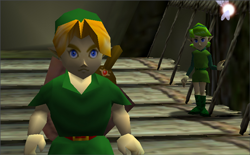 Ocarina of Time is sometimes brought up as an example of realism, and it’s not hard to see why. Doubtless it was marketed as having “realistic” graphics — they were trendy in 1998 as well, with Playstation games like Resident Evil and Final Fantasy VII and PC games like Riven pushing the limits of what we thought was possible at the time. Unlike Super Mario 64, Ocarina of Time’s trees weren’t made of puffy green cotton, but (for the time) realistic leaves and branches. There was a certain subtlety to the construction of its world, too — unlike Mario’s Bob-Omb Battlefield, Hyrule Field was filled with shades of muted green and brown. Architecture resembled real-world landmarks, and very little looked off-kilter. Ocarina of Time’s Hyrule was a living, breathing, three-dimensional world the likes of which the gaming community at large had never seen
Ocarina of Time is sometimes brought up as an example of realism, and it’s not hard to see why. Doubtless it was marketed as having “realistic” graphics — they were trendy in 1998 as well, with Playstation games like Resident Evil and Final Fantasy VII and PC games like Riven pushing the limits of what we thought was possible at the time. Unlike Super Mario 64, Ocarina of Time’s trees weren’t made of puffy green cotton, but (for the time) realistic leaves and branches. There was a certain subtlety to the construction of its world, too — unlike Mario’s Bob-Omb Battlefield, Hyrule Field was filled with shades of muted green and brown. Architecture resembled real-world landmarks, and very little looked off-kilter. Ocarina of Time’s Hyrule was a living, breathing, three-dimensional world the likes of which the gaming community at large had never seen
This is fine, for a superficial first impression. But anyone who’s played the game at length knows it’s also packed with highly expressive enemies and anime-inspired character models. Even the most human character models, like Link or Saria, would look very out of place in a realistic game. Stalfos, Skulltulas, and Stalchildren in no way exhibited realistic proportions, but were disproportionate fairy-tale monsters.
Ocarina merged arguably realistic environments with unrealistic characters, but it did so seamlessly, and it was in no small part the lack of realism that made the game charming. Again, complete realism would likely have been jarring unless Nintendo toned down several things about the game. Ocarina, were it to have fallen into the trap of superficial realism, may well have had less artistic merit. It probably would have been successful, it probably would have won gamers’ hearts, but to have lost any of the things that made this game the grand adventure that it was would have been tragic.
Majora’s Mask used Ocarina of Time’s engine to great effect to craft an entirely unrealistic world. It’s long been hailed as the darkest Zelda, and there may be some truth to that. But what makes it distinct is, once again, its clear lack of realism. There is virtually nothing about Termina that is comfortable or realistic. The entire world is filled with structures that don’t make sense and off-kilter colors. The atmosphere of overwhelming claustrophobia is conveyed well through this visual style.
There’s not much precedent for realistic visuals in the Zelda franchise. There is only one game — Twilight Princess — that could be called “realistic” in style, and even that game bucks the trend in some important ways.
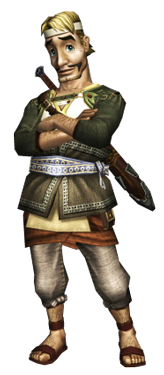 Twilight Princess is the most-cited example of realism in the franchise. It was an obvious attempt at realism on the part of the development team, a tip of the hat to the Western audience whose initial reaction to The Wind Waker’s style was so negative. There are moments of sheer beauty in Twilight Princess. Seeing the fog settle over the deepest parts of Faron Woods, exploring the ornately decorated Lakebed Temple, and even trotting around Hyrule Field are memorable experiences, assisted in no small part by the visual style and the execution.
Twilight Princess is the most-cited example of realism in the franchise. It was an obvious attempt at realism on the part of the development team, a tip of the hat to the Western audience whose initial reaction to The Wind Waker’s style was so negative. There are moments of sheer beauty in Twilight Princess. Seeing the fog settle over the deepest parts of Faron Woods, exploring the ornately decorated Lakebed Temple, and even trotting around Hyrule Field are memorable experiences, assisted in no small part by the visual style and the execution.
But the execution is also inconsistent. Upon starting a new game, the first thing the player sees is one of the ugliest character models in the game — Rusl, with his uncanny facial proportions and expressions. In a less realistic style, the character model might have worked. But with the chosen style of Twilight Princess, it’s jarring, even unsettling, and the uncanny valley is over the horizon. Most of the Ordonians, including the children who are so central to the plot, also have bizarre proportions.
There are other problems, too. Detractors of the game’s visual style often bring up how “brown” the graphics are. This is true of locations like Death Mountain and Kakariko, and many other areas of the game are also besieged by unabashed blandness. While Ocarina managed subtlety but still largely remained a colorful game, the developers of Twilight Princess took the subtlety too far, then soaked their world in thick bloom and…orange.
Ultimately, not only did the realism clash with some of the less realistic elements, but the realistic elements themselves were sometimes taken too far.
The Zelda franchise is going against modern trends, and it’s better that way. We don’t need a dark Zelda game. We don’t need a mature Zelda game. We don’t need a realistic Zelda game.
Not only would this run counter to precedent and to the series’ classic tone, it would also “modernize” it in the wrong way. So many games are pitched as realistic endeavors. Many are creative and even colorful, and many more billed as realistic (God of War, Skyrim, Bioshock) are also arguably unrealistic in important ways. But at least in terms of marketing, these games are following a trend, a standard, and an unnecessary one.
That’s not how the Zelda franchise works.
Zelda’s at its best when it’s the “other,” when it’s turning heads. Realistic games are limited by our understanding of the world around us, but the possibilities for unrealistic visuals are endless. If nothing else, less realistic graphics at least get people talking about the games’ artistic merit, and they are an immediately effective demonstration of why the Zelda franchise is so notably different. Twilight Princess was a concession to the Western audience, and while it had its own merits, it did not burn with the charm and energy that A Link to the Past, The Wind Waker, and even Majora’s Mask did. Concessions are unnecessary, and the Zelda franchise is better off without them.
Once again, it’s about the experience, and visuals are undeniably a part of that. The Zelda franchise can — and must — defy the conventions and expectations of the rest of the gaming world.
Skyward Sword did that in more ways than one, and it is an unquestionable success.
It’s important to note, though, that Nintendo taught us a lesson with The Wind Waker. They taught us that as long as they can implement their ideas well, nothing is off-limits.
Whatever message we should have taken away from Ocarina of Time’s visual style, many of us were left with the impression that realism was the proper direction for the franchise. The 2000 Spaceworld Demo, with its less unrealistic Link and Ganondorf, didn’t help matters. The Wind Waker’s unveiling looked like a shark-jumping moment for a franchise that had reached its peak, but doubters were all proven wrong when the game was released in 2003, and it swept most of the press and a good number of gamers away with its imaginative premise and stunning visuals.
Sure, this kind of thing worked just fine for Jet Set Radio, but who would have thought before 2002 that a series as large-scale and epic as Zelda could possibly have benefitted from cel-shading? Never say never.
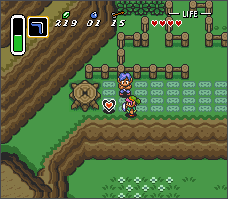 I do not think Nintendo has much to gain by entertaining a realistic style in a Zelda game, and I have outlined my reasons why. But that does not mean that they are incapable of it, or that they shouldn’t try again. The Zelda franchise’s many unrealistic styles are all charming, but they are also different, and perhaps one day, the developers will find a way to craft another memorable adventure of childlike wonder with their own unique spin on realism.
I do not think Nintendo has much to gain by entertaining a realistic style in a Zelda game, and I have outlined my reasons why. But that does not mean that they are incapable of it, or that they shouldn’t try again. The Zelda franchise’s many unrealistic styles are all charming, but they are also different, and perhaps one day, the developers will find a way to craft another memorable adventure of childlike wonder with their own unique spin on realism.
For now, gamers should be thankful that the Zelda franchise has kept alive the once-abundant fairy tale worlds that made earlier generations of consoles such a delight. Here’s hoping we get many more.



